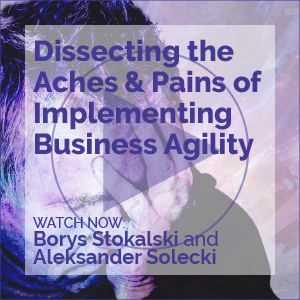High-Risk Technology Decisions ... Is IT Really Prepared to Make Them?
Despite the billions of dollars spent on technology, not much money is spent on how major technology decisions get made.
High-Risk Technology Decisions ... Is IT Really Prepared to Make Them?
Despite the billions of dollars spent on technology, not much money is spent on how major technology decisions get made.
Beyond Features
"Top Ten" Security Requirements
The data from a recent Cutter Consortium study reveals that 55% of companies have modified their security processes since September 11.
Yes: 45% No: 55%Figure 1 -- Has your organization deployed an enterprise-wide security administration application since September 11?
Sans Frontiers
Risk management plans, by virtue of their definition as a component of the project management plan, are too often perceived as being project specific but limited to an internal project focus. As a result, project risks that are identified frequently tend to be constrained to technical/resource issues within the management scope of the project/program manager (PM).
Sans Frontiers
Risk management plans, by virtue of their definition as a component of the project management plan, are too often perceived as being project specific but limited to an internal project focus. As a result, project risks that are identified frequently tend to be constrained to technical/resource issues within the management scope of the project/program manager (PM).
Structures for Absorbing Change
Structures for Absorbing Change
Artificial Intelligence in Bahrain
Every so often, I'm reminded that I started writing about computing in the early 1980s and wrote primarily about artificial intelligence through most of that decade. Usually I think of it because I read of some new achievement by an AI system. In this case, I noticed that the current world champion chess master, Vladimir Kramnik, just achieved a draw with Deep Fritz, the current reigning chess program.
Structures for Absorbing Change
Structures for Absorbing Change
Artificial Intelligence in Bahrain
Artificial Intelligence in Bahrain
Java Online Analytical Processing Update
Enterprise Portals: Strategies and Best Practices
Funding: Who Pays the Technology Bills?
How much are you spending on technology? Who pays for what? How do you determine funding responsibilities? And how do you determine how to pay for infrastructure, applications, R&D, and ongoing technology management? These are huge issues -- especially when you consider that the US spends more than one trillion dollars a year on hardware, software, and services. Yes -- a trillion dollars!
Organization: A Trend Emerges
How many of us wrestle with the question "who should report to whom?" several times a year? Have your efforts to "reorganize" the business-technology relationship been proactive or reactive? Often, because some influential people complain about the relationship, things change. But reactive changes usually don't last long.
The Architecture Council: Using Self-Interest in the Company's Interest
IT experts have predicted for years that architectural thinking will save money and increase flexibility in IT. But few firms have implemented architectural models and processes that enable integration, standardization, and reuse. Fortunately, in the past couple of years, companies are becoming more serious about architecture. They are thinking about standards and reuse at the highest levels.
Three is the Magic Number
Editor's Note: The following two articles are from Cutter's Business Technology Trends and Impacts Council Opinion, " Spending Priorities for 2002," (Vol. 2, No. 11) published at the close of 2001. It may benefit readers to consider what you ended up spending on IT for 2002 and compare it to what is budgeted for 2003. Are your charging strategies for IT defined more clearly in 2003?
Get Set for Change
As IT departments go through the rigors of budgeting for the next fiscal year, they'll have to cope with the pressures of the economic slowdown and the realities of the post-9/11 world of terrorism.
Managing the IT Resource: Budgets, Organization, and IT Governance
This time of year, whether you want to or not, you have to give some thought to the basic issues of our IT management profession. Things like: Who's paying? How much can the company afford? What technologies does it want? And what is most important? Many of you have been working up annual budgets and plans for months, but the time is near, here, or past, when you'll have to lay out your commitments and defend what you think.
Getting the Most Out of Your IT Application and Project Investments
"Getting more from less" is an oft-repeated cliche, especially in hard economic times. As most IT professionals can attest, pressure on IT costs is stronger than ever, yet executives still expect higher performance. These pressures go beyond wringing more performance from IT staff, extending to the projects and assets managed by the IT organization.
Getting the Most Out of Your IT Application and Project Investments
In tough economic times, "getting more from less" is a common refrain. For IT organizations, the pressure on costs is enormous, yet high performance is still expected. After wringing performance gains from IT staff, IT managers are seeking to increase business value by actively managing their application and project portfolios.




